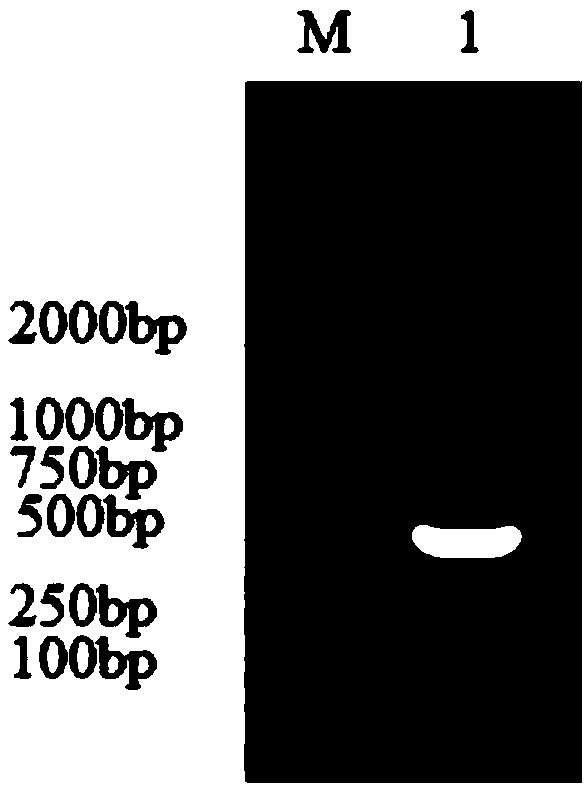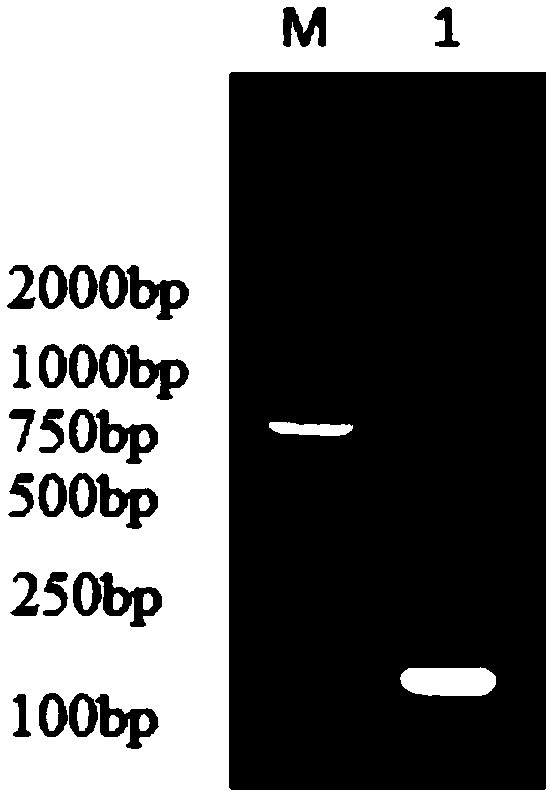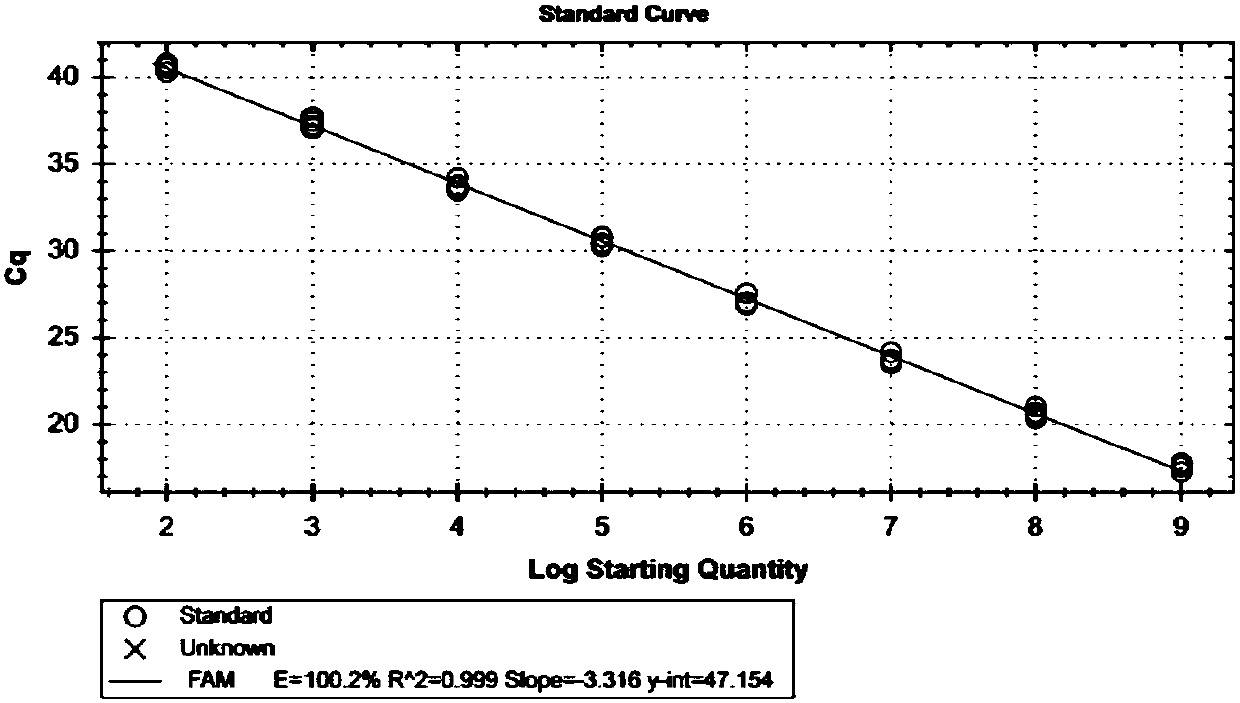Fluorescent quantitative PCR primers and kit for detecting novel SADSCoV (swine acute diarrhea syndrome coronavirus)
A technology for acute diarrhea and fluorescence quantification, which is applied in the determination/inspection of microorganisms, resistance to vector-borne diseases, biochemical equipment and methods, etc., to achieve high accuracy, efficient identification, and good repeatability
- Summary
- Abstract
- Description
- Claims
- Application Information
AI Technical Summary
Problems solved by technology
Method used
Image
Examples
Embodiment 1
[0046] The preparation of embodiment 1 standard positive template
[0047] 1. Extraction of total virus RNA
[0048] According to the Invitrogen company TRIZOL LS Reagent RNA extraction kit instruction manual. Add 250 μL of the aliquoted supernatant of positive disease material grinding liquid (from a pig farm in Guangdong) and 750 μL TRIZOL to a 1.5 mLeppendorf tube, mix thoroughly, and place at room temperature for 10 min; add 200 μL of chloroform, shake vigorously for 15 sec, and stand at room temperature for 5 min. Centrifuge at 12000rpm at 4°C for 15min; transfer the supernatant to a new 1.5mL eppendorf tube, add 500μL of isoamyl alcohol, mix well, place at room temperature for 10min, centrifuge at 12000rpm at 4°C for 10min; discard the supernatant, and store on ice 1000 μL of pre-cooled 70% ethanol, mix gently, wash once, centrifuge at 12,000 rpm at 4°C for 10 min; discard the supernatant, and air-dry; dissolve RNA with 20 μL of DEPC-treated triple distilled water, stor...
Embodiment 2
[0072] Example 2 Fluorescent quantitative PCR reaction condition optimization and standard curve making
[0073] The optimized fluorescent quantitative PCR reaction system is: 10 μL of 2×Premix Ex Taq (Probe qPCR), 0.8 μL of 10 μM upstream and downstream primers and probes, 1.0 μL of cDNA template, ddH 2 O supplemented to 20 μL.
[0074] The optimal fluorescent quantitative PCR reaction conditions are: 95°C for 30s; 95°C for 5s, 60°C for 30s, 40 cycles.
[0075] Determination of OD of standard recombinant positive plasmid 260nm and OD 280nm value and its ratio, calculate the plasmid concentration, and convert it into copy number, serially dilute it into 9 gradients with double distilled water 10 times (10 9 ~10 1 copies / μL). Using this as a template, a 20 μL reaction system was established, and amplified on a Bio-Rad fluorescent quantitative PCR instrument according to the optimized PCR reaction system. The obtained standard curve is shown in image 3 . As a result, the...
Embodiment 3
[0076] The sensitivity test of embodiment 3 real-time fluorescence quantitative PCR
[0077] The 10-fold serial dilution of SADS-CoV positive standard was used as a template for real-time fluorescent quantitative PCR (3.08×10 0 ~3.08×10 10 copies / μL, a total of 11 gradients, to determine their lower limit of detection. As a result, using the PMD19-T-N standard as a template, the detection limit of fluorescent quantitative PCR was 3.08×10 1 copies / μL (eg Figure 4 Shown), show that the fluorescent quantitative PCR primer and method of the present invention have high sensitivity.
PUM
 Login to View More
Login to View More Abstract
Description
Claims
Application Information
 Login to View More
Login to View More - R&D
- Intellectual Property
- Life Sciences
- Materials
- Tech Scout
- Unparalleled Data Quality
- Higher Quality Content
- 60% Fewer Hallucinations
Browse by: Latest US Patents, China's latest patents, Technical Efficacy Thesaurus, Application Domain, Technology Topic, Popular Technical Reports.
© 2025 PatSnap. All rights reserved.Legal|Privacy policy|Modern Slavery Act Transparency Statement|Sitemap|About US| Contact US: help@patsnap.com



